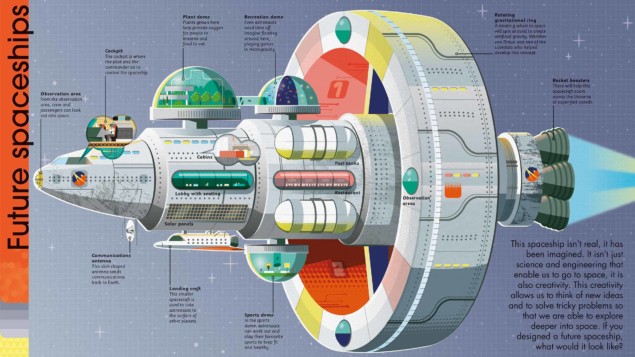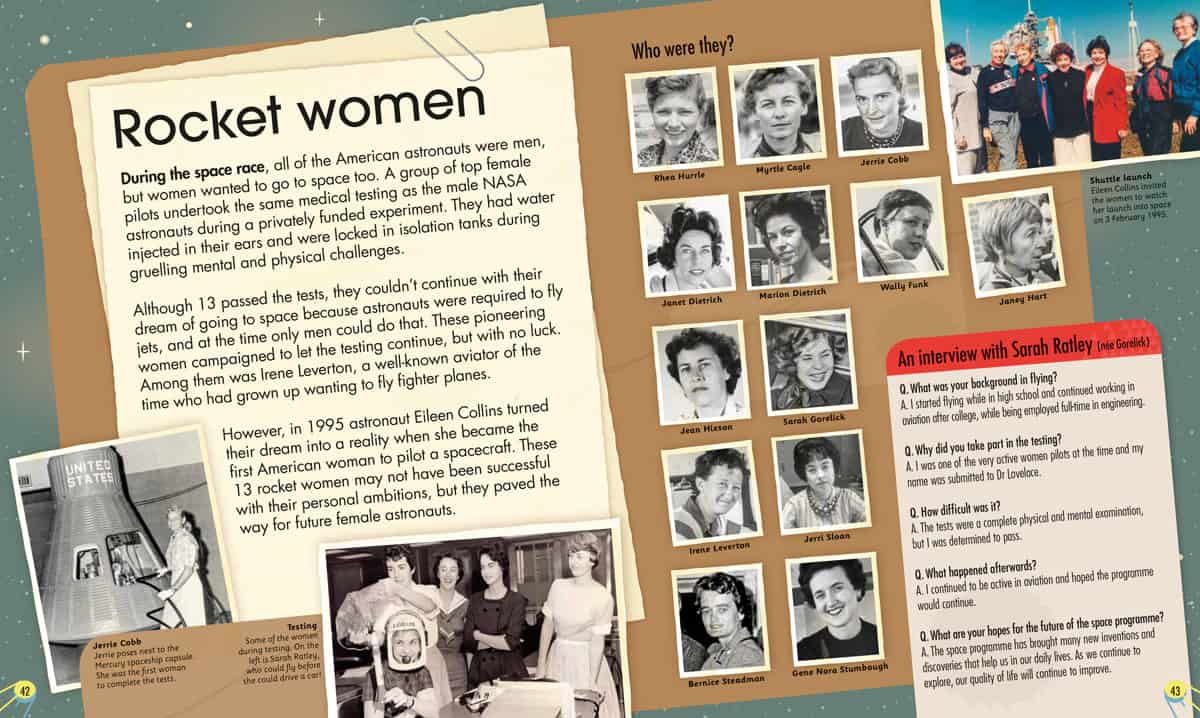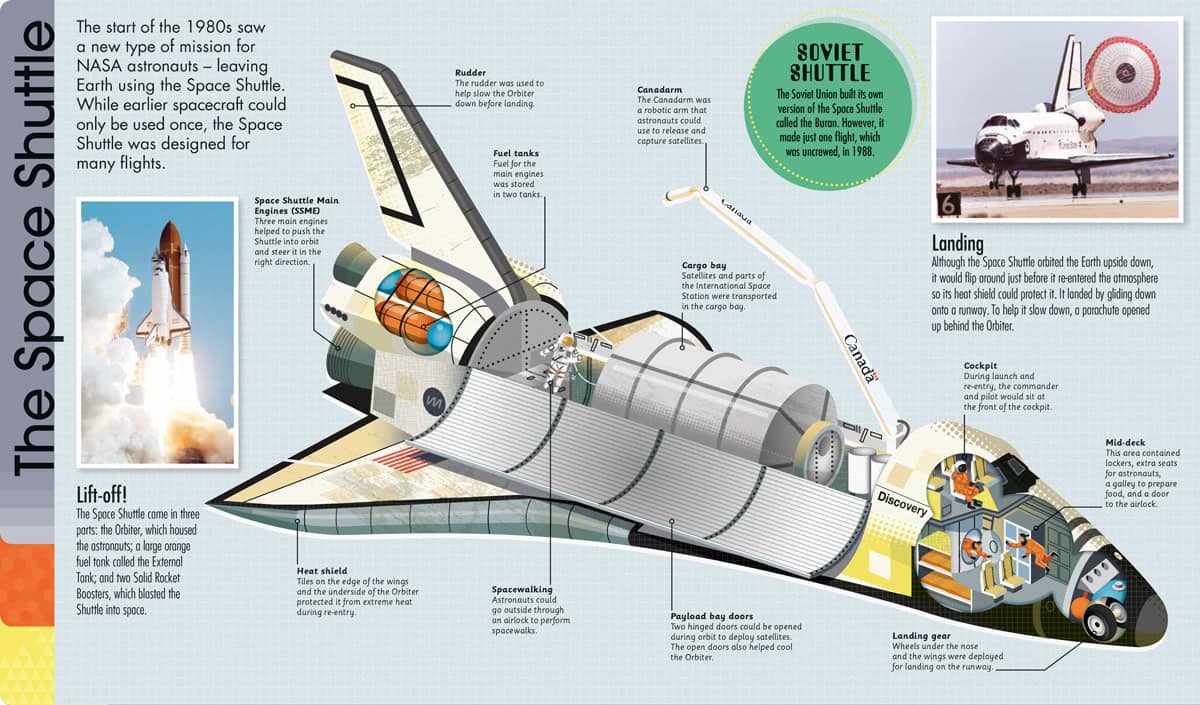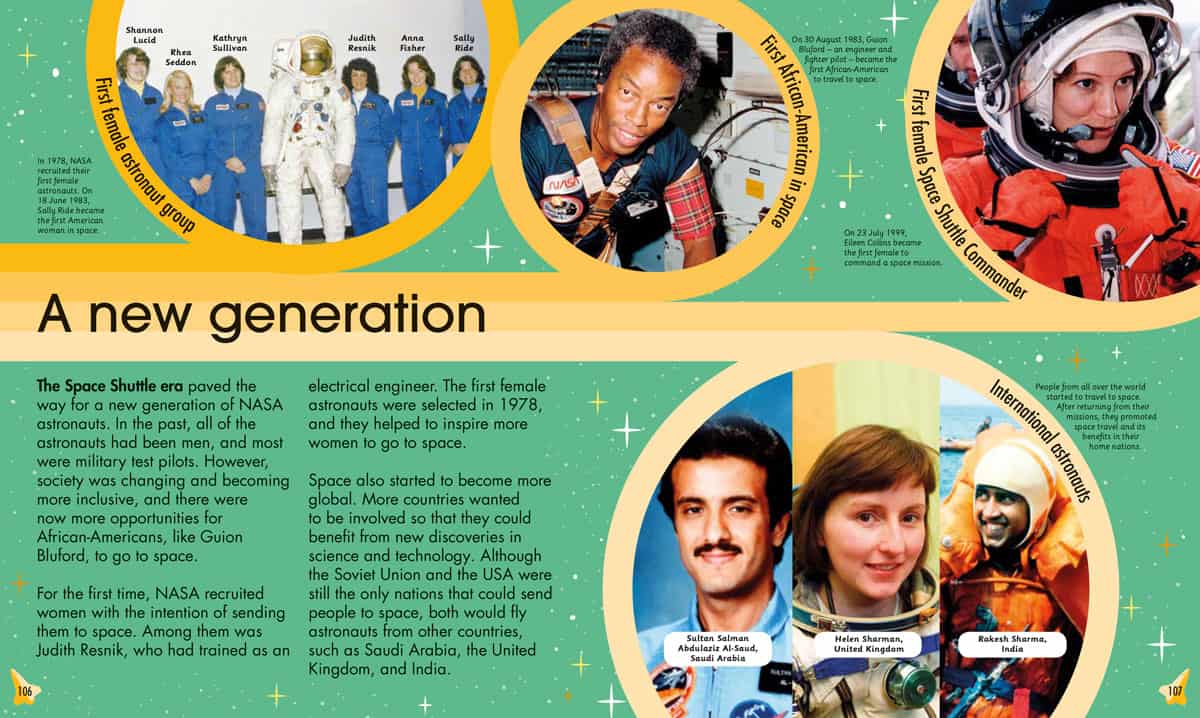Tushna Commissariat reviews The Space Race: the Journey to the Moon and Beyond by Sarah Cruddas

“Being in space is awesome. It’s the most amazing human experience,” writes NASA astronaut Eileen Collins in the foreword to The Space Race by Sarah Cruddas, the latest book about the Moon and space travel to hit the shelves this year. Collins, the first ever female Space Shuttle commander, sets the right tone to kick off this children’s book that will take young readers from Earth to the Moon, across the solar system and much further beyond.
The book is divided into three main sections – “To the Moon”, “After Apollo 11” and “The New Space Race” – each of which include nearly 30 double-page spreads. In the first section, Cruddas quickly but clearly covers nearly 100 years of aeronautic research (actually she goes as far back as the first gunpowder-powered rockets built by the Chinese in 1200 CE, but then jumps forward to the start of the 20th century, when scientists really began thinking of sending rockets into space). Zipping from Wernher von Braun and Sergei Korolev to Yuri Gagarin and Alan Shepard, this section swiftly brings us to the Moon. Along the way, children will learn about everything from the first animals in space to how astronauts learned and trained to walk in space.
With a shiny silver cover, large square format and brightly coloured illustrations, this book is sure to catch and hold any child’s attention. Indeed, the artwork, created by popular children’s book illustrator Mark Ruffle, really brings this book together. With their vivid colours and slightly vintage style, the graphics keep you turning the pages.

One of my favourite spreads in the book is “Rocket women”, which highlights the Mercury 13 – a group of talented and ambitious female pilots all of whom passed NASA’s rigorous astronaut testing in the early 1960s, but sadly never made it into space. A photo of them standing with Collins prior to her first launch in 1995 is particularly touching – but including these stories in books aimed at children is of importance even today.
Another excellent spread is that depicting the Lunar Module. While simple and not too detailed, it outlines all the key parts of this amazing achievement in engineering. And a similar two-page spread does a great job at labelling all the parts of the astronauts’ spacesuits.
The “After Apollo 11” section of the book has a few fun pages showing Neil Armstrong, Buzz Aldrin and Michael Collins “on tour” around the world, post their historic first mission to the Moon. Most of that section then follows the other Apollo missions, their various triumphs and failures, the legacy of the Apollo missions, and what it meant for humans to have reached space at that time in our history.

Cruddas spends a good few pages, as she should, detailing the Space Shuttle and the “new generation” of NASA astronauts that it paved the way for. It is at this point where the much more international nature of modern space travel becomes visible, as astronauts from different countries are featured, including Helen Sharman, the first British astronaut to go into space. The book touches on other space-based ventures such as the Mir space station and the Hubble Space Telescope, and of course the International Space Station (ISS). There are many detailed and informative pages that cover the vast amount of research that has been carried out on the ISS over the years, and the many astronauts who have visited it.
The final third of the book, “The New Space Race”, is what sets this book apart in many ways. While there are numerous books about space travel for children available, I can’t think of many (or indeed any) that actually tell the story of what is happening today in the space sector. Cruddas – a trained astrophysicist and BBC broadcaster who specializes in the commercial space sector – is particularly well placed to tell this part of the story. She deftly covers everything from asteroid mining to getting humans to Mars, from SpaceX and its landing rockets, to the problems of space junk and space tourism.

This section includes a spread on “space creations” that touches up how 3D-printing technology is already being used on board the ISS to build small tools and devices. To further inspire young readers, Cruddas has also included a spread on “space jobs” of the future, where she highlights roles such as spacecraft designer and space farmer, as well as an interview with Virgin Galactic test pilot Kelly Latimer.
The penultimate spread, depicting “future spaceships” that could carry small nations across interstellar space (or through a wormhole even) is truly exciting and sure to fire the imaginations of all readers, young and old alike.
- 2019 DK Children 192pp £16.99hb



